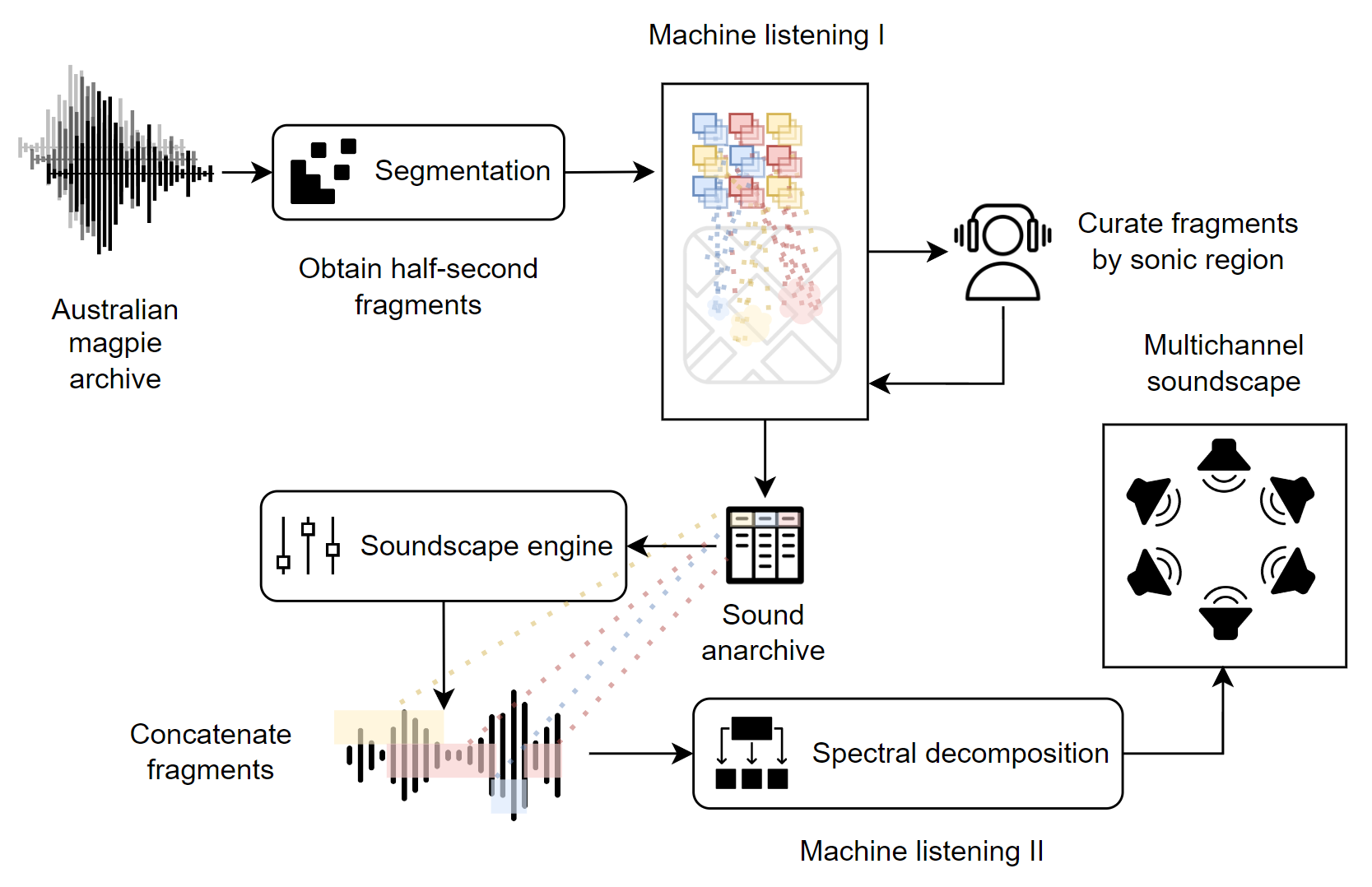Dadamining Datamining
Algorithmic soundscape with Australian birds
Skills
- Media Art
Data mining methods for animal sound are used to produce a multichannel soundscape. Sound fragments of a Western Australian archive are subjected to two Machine listening algorithms. The first one assigns numeric addresses to soundscape regions by signal similarity (ie neighbouring sounds have similar sound texures). The latter segregates the products of algorithmic composition, a monophonic recording, into six audio channels. As a whole, the resulting soundscape displays a mundane industrial process of datamining sound with no analytic purpose but a dadaist impulse of listening to found fragments. Click here for more information on the scientific use of this sound archive.

In my arts-based research, machine listening is not a double of ear-bodied listening experiences, nor a continuation of computation in the domain of digital audio. As a regime of automation, machine listening constitutes an archival force. Digital sound memories are industrialised with algorithmic addressing schemes and filtering protocols which are never fully autonomous as the myth of artificial intelligence suggests.
If sound ecologies are open-ended and more-than-human, how can the (re)generative performance of machine listening subvert reductive technical desires (ie anarchive) what has already been fully pre-empted and automated in the archive?
This work was premiered in Melbourne (Australia) at the festival NONSTOP WKND: Planetary Auditions.
Binaural recording available here.